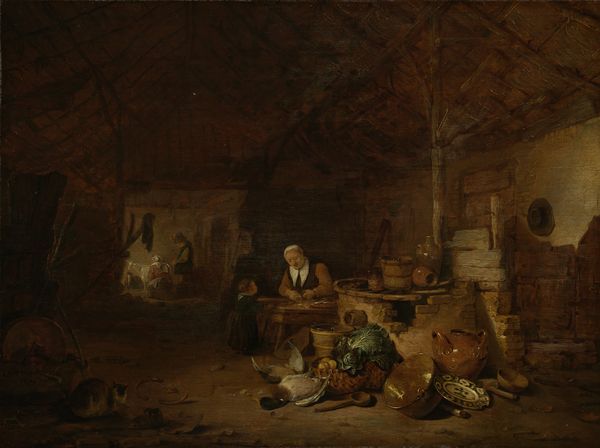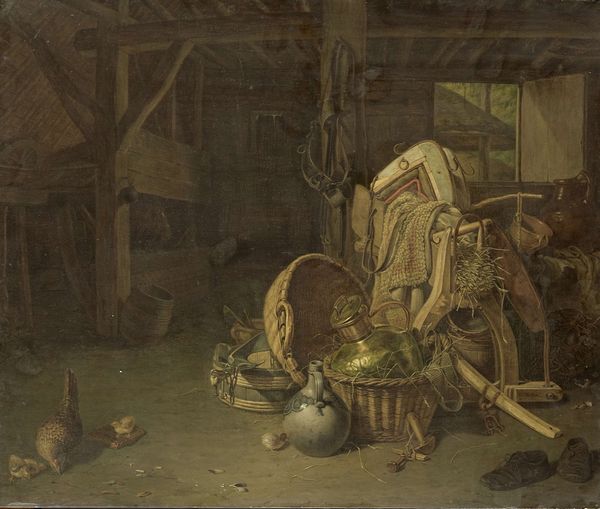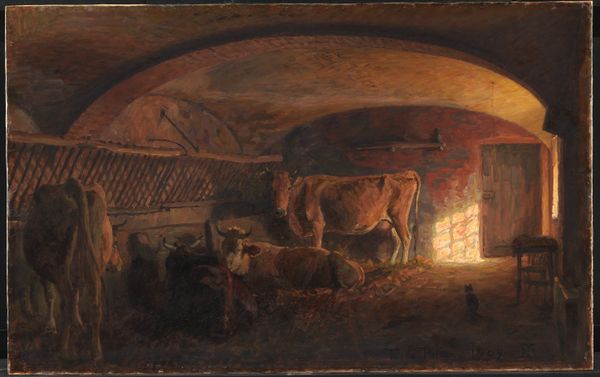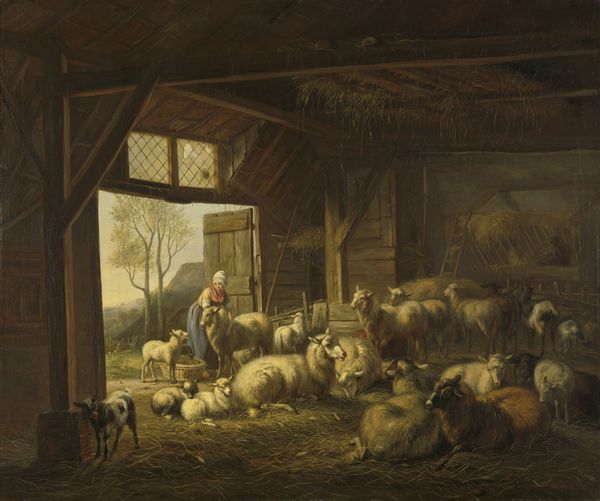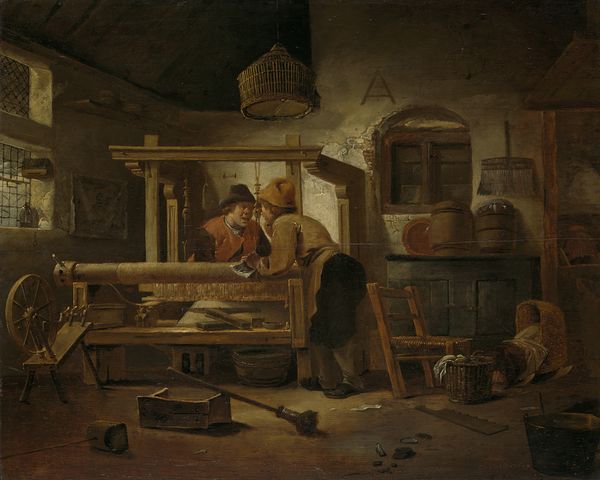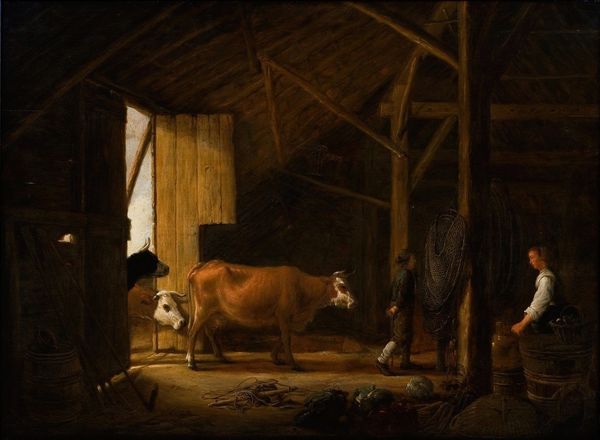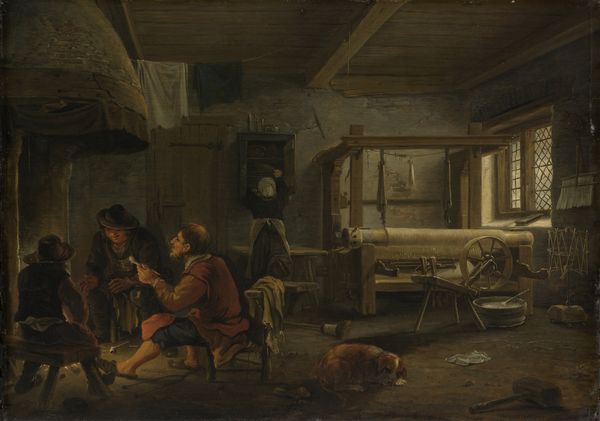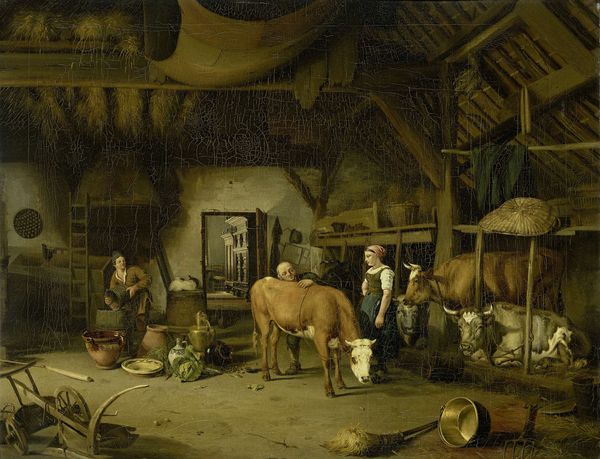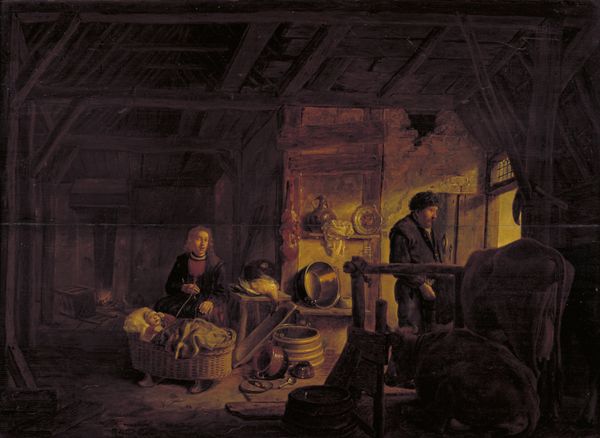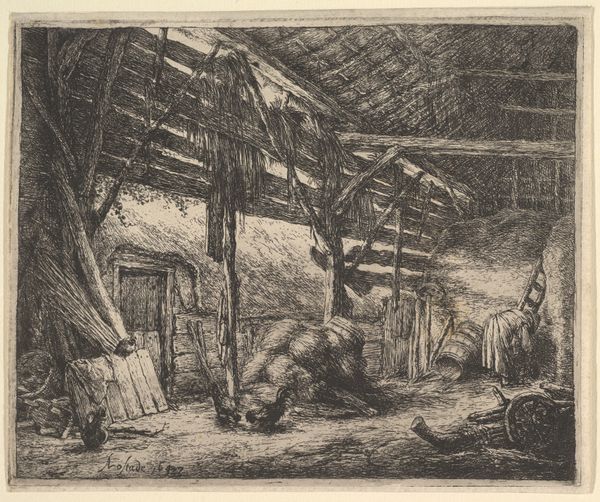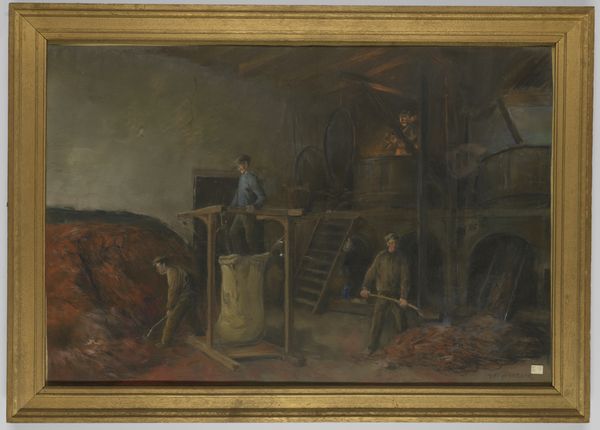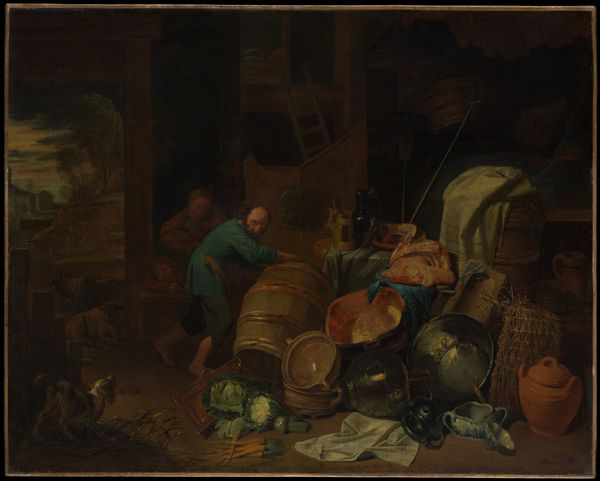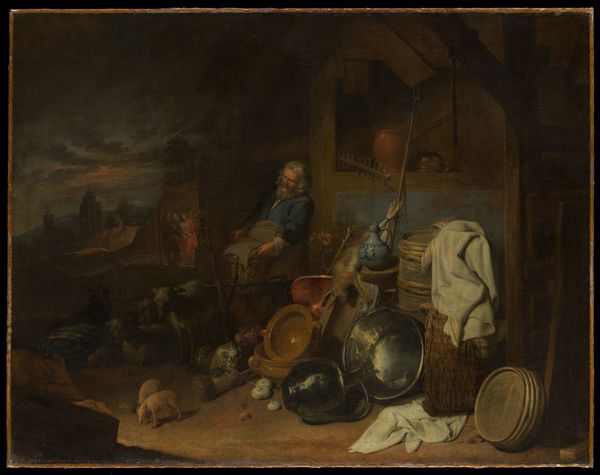
Dimensions: 18 1/8 x 36 1/8 in. (46 x 91.8 cm)
Copyright: Public Domain
Curator: "The Sheepfold," crafted in 1857 by Charles Jacque, offers a glimpse into rural life, a scene currently housed at the Metropolitan Museum of Art. What’s your first take on it? Editor: A dense, warm interior. The golden light gives a bucolic, comforting atmosphere, even if it’s clearly a workspace, too. All that hay and wool feels palpable. Curator: Jacque was deeply immersed in rural genre painting, his oeuvre intertwined with the Barbizon school’s celebration of nature and the peasant. We can consider it through the lens of class dynamics present in mid-19th century French society. How does he elevate or perhaps romanticize agricultural labor? Editor: Well, the romanticism is clear. It's less about elevating labor, and more about aestheticizing it through material reality—look at the sheep's wool and the worn wooden beams of the barn. He focuses on textures, the inherent value of raw materials and the kind of physical work needed to keep them going, literally turning straw into sustenance. There’s also a deep dive into the economic structures of the time that we should consider in this work. Curator: Exactly. There’s a conversation happening here about access and production and the commodification of animals, class disparities, and labor ethics, especially in relation to Jacque’s social positioning at that time. Editor: And technique really amplifies that context; consider Jacque's application of oil paint. He builds layers to achieve a tangible reality effect, particularly evident in the sheep's fleeces and scattered hay. It emphasizes the material quality, and implicitly recognizes the amount of material goods that this setting demands to function. Curator: Right. This image exists at the nexus of economic, class and environmental themes, echoing concerns relevant to current ecological and social issues. Jacque's "Sheepfold" offers a compelling insight. Editor: Seeing how he works with layers and luminosity also gives clues about labor’s impact, I agree, making it feel grounded in real stuff and lives of its own time, rather than being too flowery or romantic.
Comments
No comments
Be the first to comment and join the conversation on the ultimate creative platform.
